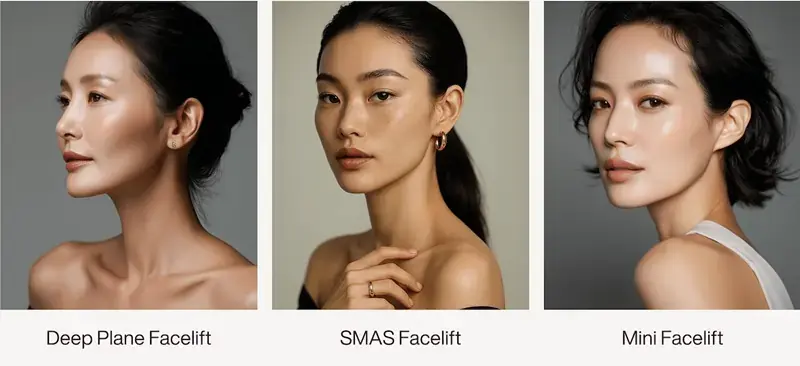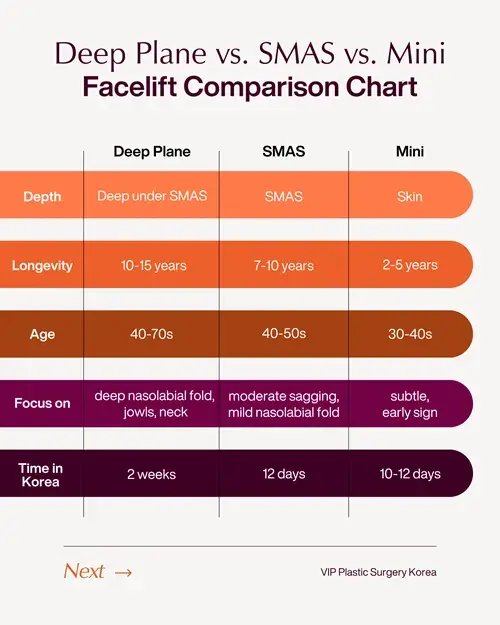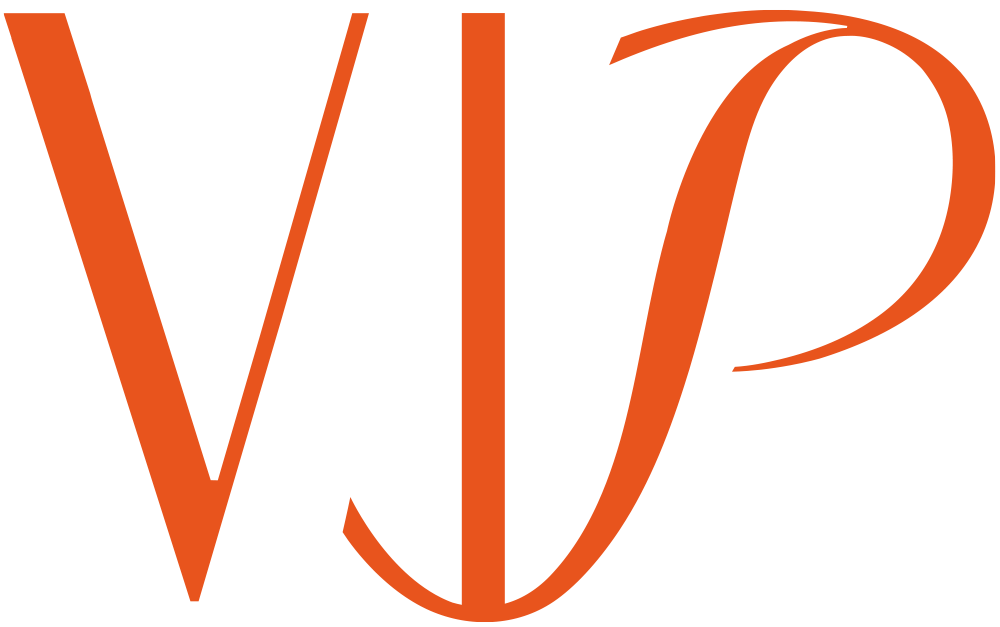Types of Facelift: Mini vs SMAS vs Deep Plane Facelifts

Facial rejuvenation surgery has evolved well beyond the one‑size‑fits‑all lift of decades past. Today, VIP surgeons tailor the depth and extent of dissection to the patient’s age, anatomical concerns, and downtime expectations. Below is a concise overview of the three techniques that VIP offers – Deep Plane Facelift, SMAS Facelift, and Mini Facelift – explained easily.

1. Deep Plane Facelift — the Standard for Comprehensive Rejuvenation
- Dissection level: Releases and repositions the deep tissue layer beneath the SMAS and facial muscles, releasing underlying ligaments in the mid-face.
- Clinical impact: Improves depressed nasolabial folds, heavy jowls, and neck laxity while restoring cheek volume for a naturally youthful contour.
- Longevity: 10–15 years on average, currently the most durable lifting method.
- Ideal candidate: Patients in their late 40s to early 70s seeking a transformative yet natural‑looking result and willing to invest in a two‑week recovery.
2. SMAS Facelift — the Established Method for Patients with Less Soft Tissue
- Dissection level: Elevates and tightens the Superficial Musculoaponeurotic System (SMAS) without entering deeper planes.
- Clinical impact: Addresses moderate lower‑face sagging and mild nasolabial folds; Ideal for thin skin patients with less soft tissues on the mid face area.
- Longevity: 7–10 years.
- Ideal candidate: Individuals in their 40s to 50s who exhibit tissue laxity but do not require deep tissue alterations. Downtime averages 12 days.
3. Mini Facelift — the Subtle Lift for Patients in Early Age
- Dissection level: Primarily skin tightening with limited SMAS plication; partial coverage of the mid-face.
- Clinical impact: Refines early jowls and lax jawline definition; subtle change to mid‑face.
- Longevity: 2–5 years.
- Ideal candidate: Patients in their late‑30s to 40s with subtle aging signs who prefer a shorter 10–12 day recovery and smaller incisions.

How to Choose the Right Technique
- Assess anatomical depth of aging. Depending on your skin laxity, deep tissue condition, areas of loose skin, and condition of plastysma neck band, the method of the surgery may change to cover the area.
- Balance longevity with downtime. Major transformation means longer recovery period, but also longer duration of the results.
- Factor in future maintenance. Energy‑based lifting lasers and injections can complement—but not replace—surgical lifts, especially after a mini facelift.
- Seek surgeon expertise. The best result comes out when the surgeon routinely performs all three methods and can customize the plane of dissection to your tissue quality.
The most effective way to determine the ideal facelift technique for your needs is through a personal consultation with a specialist. VIP offers a complimentary online photo evaluation to help assess which type of facelift would be most suitable for you. Simply submit an online consultation request for the doctor’s review. Following the preliminary assessment, video consultations are also available for more detailed discussions.
Connect us at (82) 10 5059 662 or book online to schedule a facelift consultation with Dr. Myung Ju Lee


















